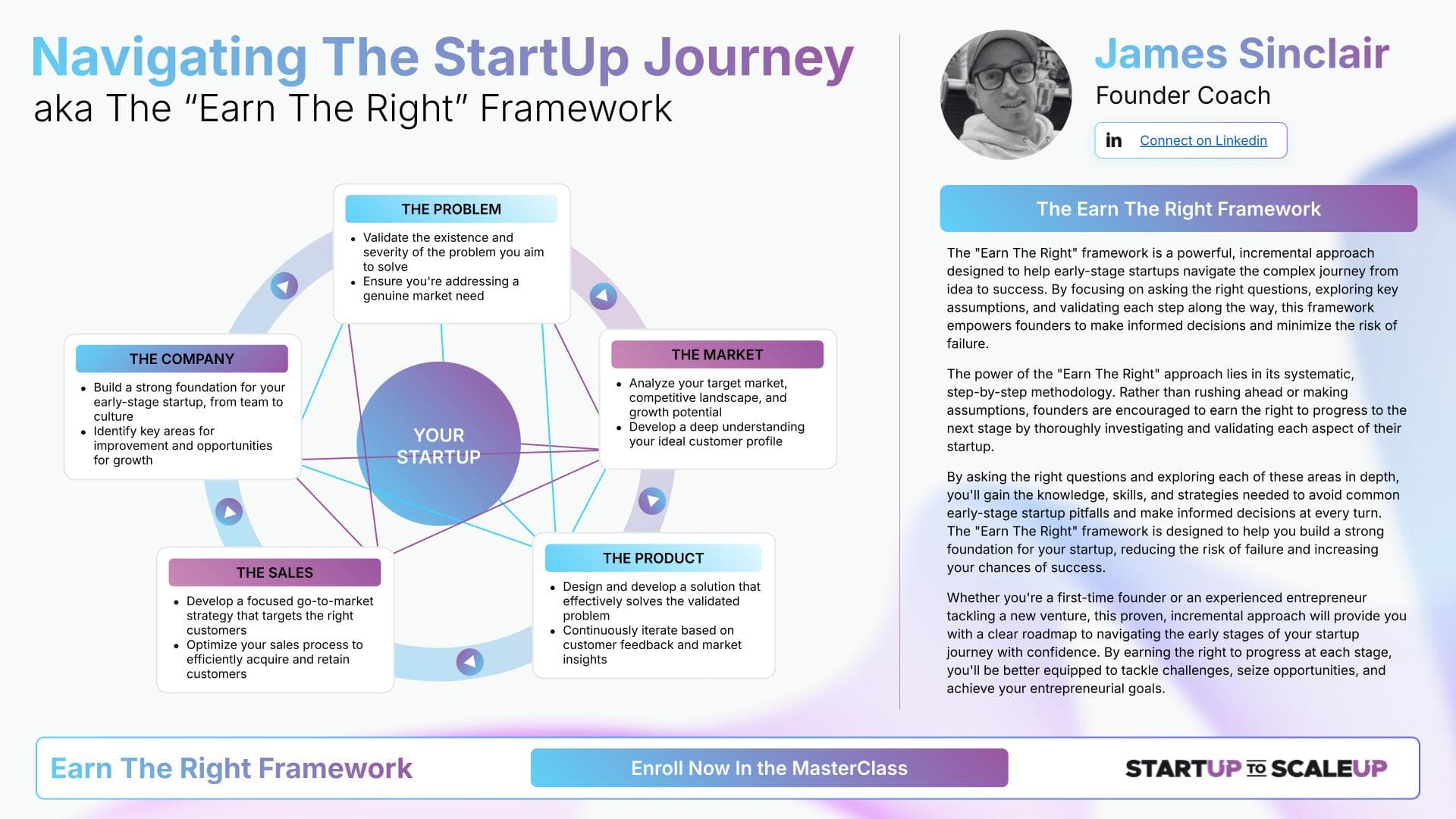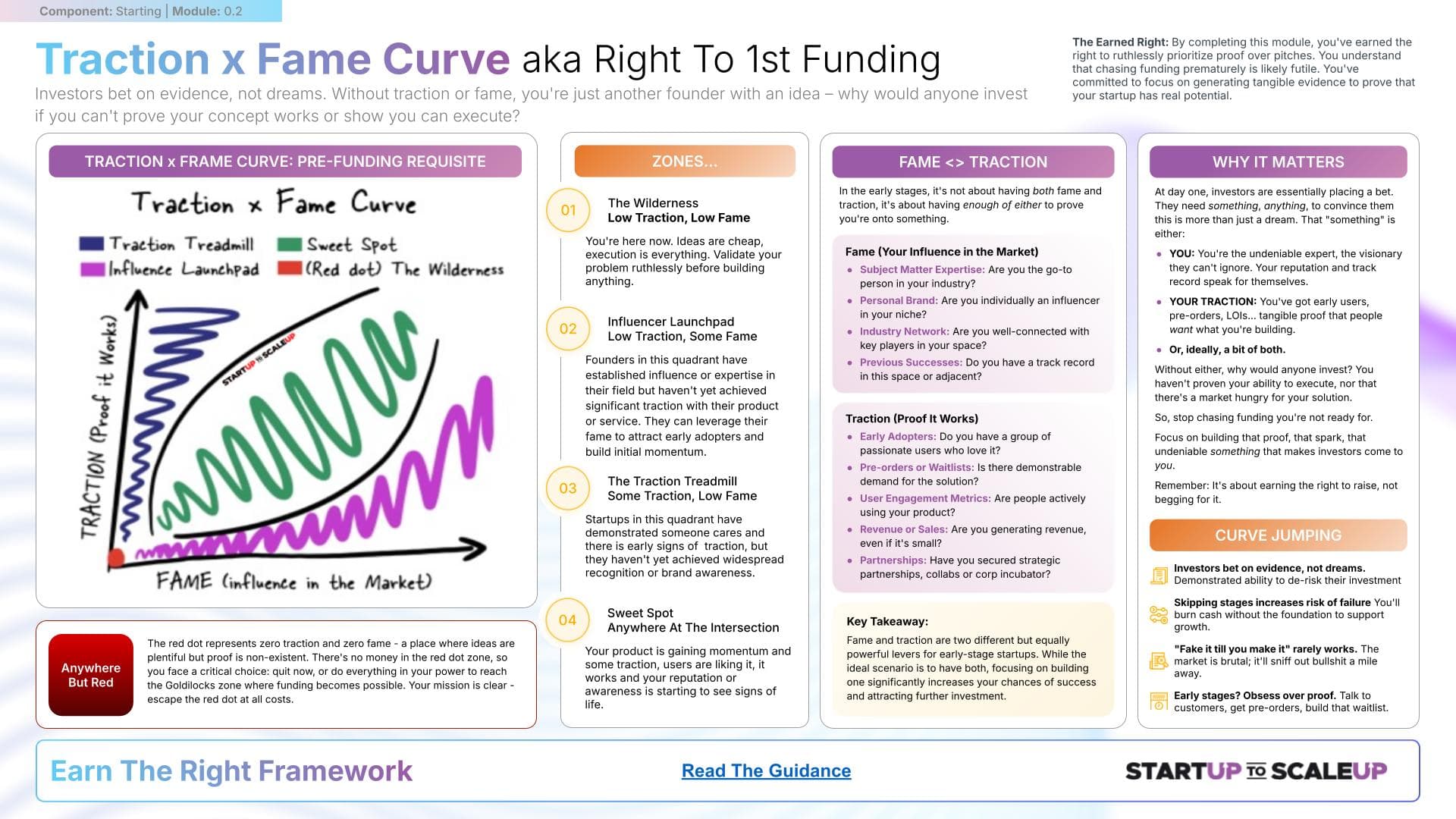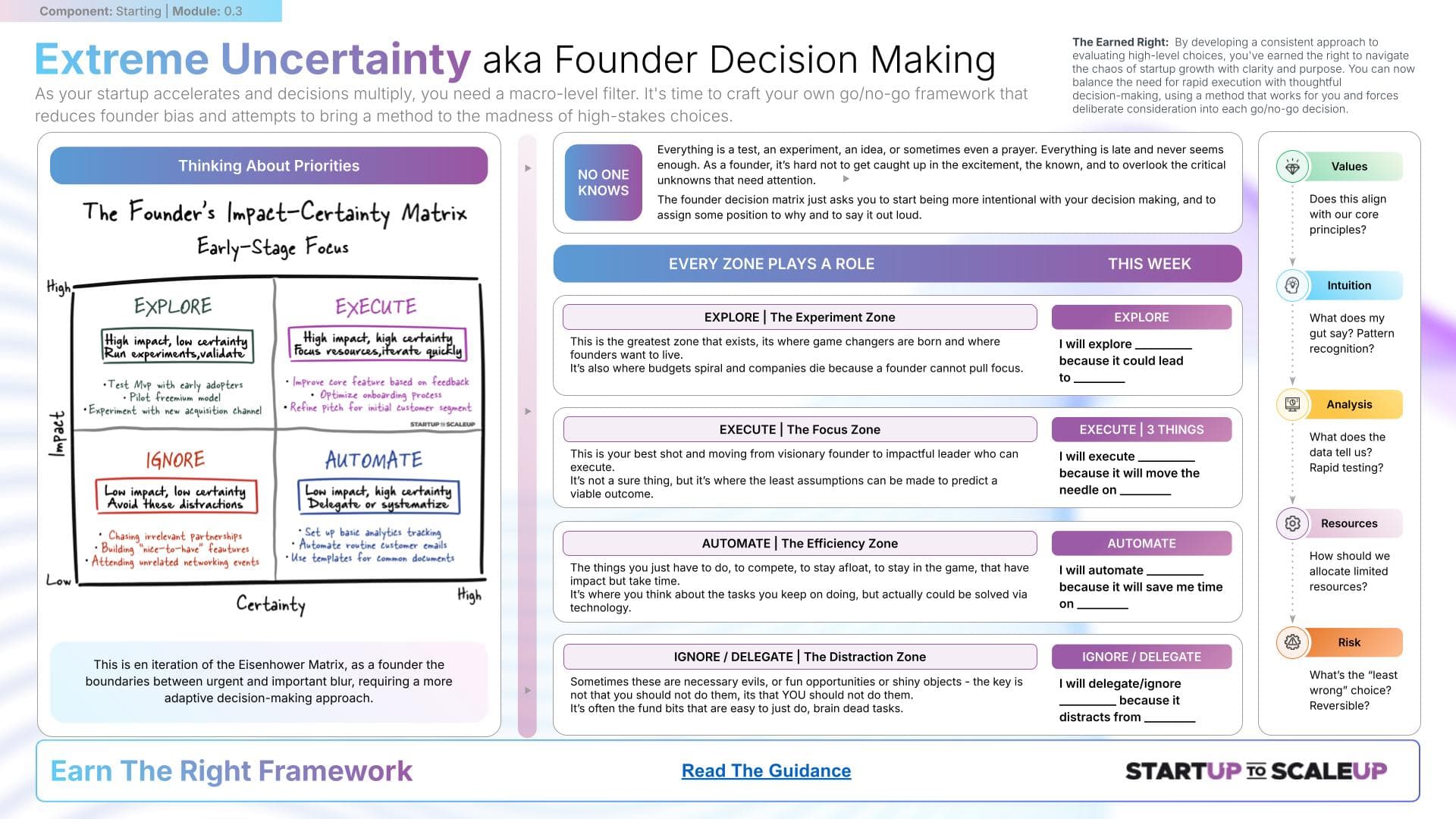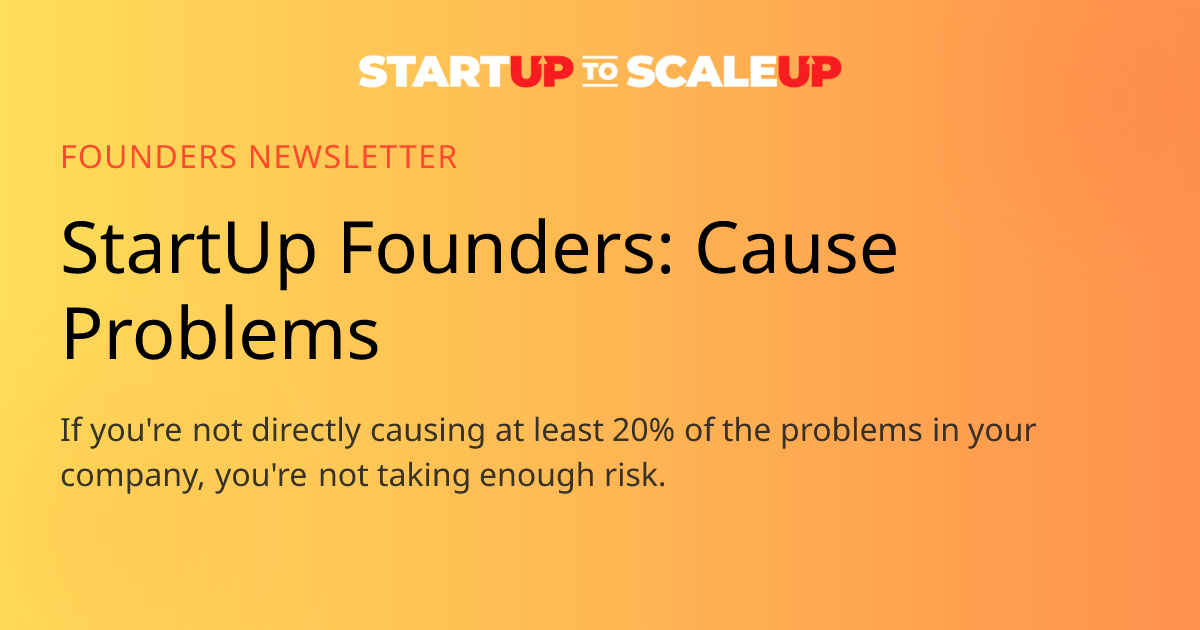
Join 140,000+ Startup Founders Getting theTactical Edge
Every Sunday, I share exclusive insights, frameworks, and strategies that helped me build and exit 3 startups. No fluff. Just actionable advice to help you win.
Get instant access to the 50-Step Founder Playbook downloaded over 1M times
READ BY FOUNDERS FROM:























































James Sinclair
Founder Coach
90% of Startups Fail.Not because founders don't work hard, but because theybuild products nobody wants.
Startup Frameworks
Proven frameworks to help you validate your idea, find product-market fit, and scale your business.

Earn The Right
This module shows you how to reframe startup progress as a series of earned rights. You'll learn to self-diagnose your stage, anchor decisions in proof, and accelerate execution without skipping foundations.

There Is No Money
There Is No Money teaches you how to earn the right to raise capital — not with a deck, but with evidence. You’ll learn how to use traction or credibility to escape the 'Red Dot' and become fundable. This module gives you a clear way to self-diagnose, frame early signals, and build momentum that investors can’t ignore.

Extreme Uncertainty
This module shows you how to make faster, smarter calls in the face of unknowns. You'll learn how to prioritize actions based on risk, evidence, and resources — using a battle-tested decision matrix designed for early-stage chaos.
The Founder's Playbook
The complete guide to building a successful startup from scratch, based on real-world experience.

Starting A StartUp: Build Something People Want
Whether you're a first-time founder or an experienced entrepreneur tackling a new venture, this proven, incremental approach will provide you with a clear roadmap to navigating the early stages of your startup journey with confidence.
By earning the right to progress at each stage, you'll be better equipped to tackle challenges, seize opportunities, and achieve your entrepreneurial goals.
Practical Frameworks
50+ battle-tested frameworks to validate your idea, find product-market fit, and scale your business.
Real-World Examples
Case studies from successful startups that show you exactly how to apply these frameworks in practice.
Actionable Advice
Step-by-step guidance on how to implement each framework, with templates and worksheets included.

James Sinclair
Founder Coach
The difference between successful founders and everyone else isn'tintelligence or luckit's the ability to validate ideas before building them.
Weekly Insights
Join 140,000+ founders getting exclusive strategies, frameworks, and founder stories every Sunday.

Cause Problems: Why Founders Must Create 20% of Their Company's Chaos
If you're not directly causing at least 20% of the problems in your company, you're not taking enough risk. Your job isn't to prevent problems. It's to trade up for better ones.

Small Windows: Backcasting and Temporal Chunking for Founders
Decide the outcome, work backwards until the work becomes obvious. Break the year into windows small enough that you can't hide. Backcasting and temporal chunking for founders who want to actually ship.

Personal Velocity: Why Elite Founders Move Faster Than Everyone Else
For all your brilliance, vision, and manifesting, you are likely operating like a snail. Personal velocity is the game at early stage. Speed doesn't guarantee success, but lack of speed almost guarantees failure.
Latest Posts
Practical advice and insights to help you navigate your startup journey.
Build Something People Actually Want: A Founder's Guide to Validation
A $100 Survey Monkey could have saved Quibi $2 billion. Here's how to avoid their mistake.
Should a Startup Have Two CEOs? No. (Sometimes!)
Why co-CEO setups almost always fail, how founder friction compounds, and what to do if you’re already stuck.
StartUp Founder Loneliness
The emotional cost of building something from nothing—why it's normal, and what to do about it.
Founder Resources
Essential guides to help you avoid common pitfalls and build something that actually works.
A tactical, no-fluff guide to identifying zombie startups, diagnosing the hidden rot, and executing a revive-or-kill play within 90 days.

James Sinclair
I'm James Sinclair, a 3x Exited Founder who now spends every day working with remarkable entrepreneurs at all stages.
I've helped hundreds of founders navigate the complex journey from idea to successful startup. My frameworks have been downloaded over 1 million times, and my weekly newsletter reaches over 140,000 founders around the world.
Join 140,000+ Founders
Get weekly insights on building and scaling startups. No fluff, just actionable strategies.
Get instant access to the 50-Step Founder Playbook downloaded over 1M times
